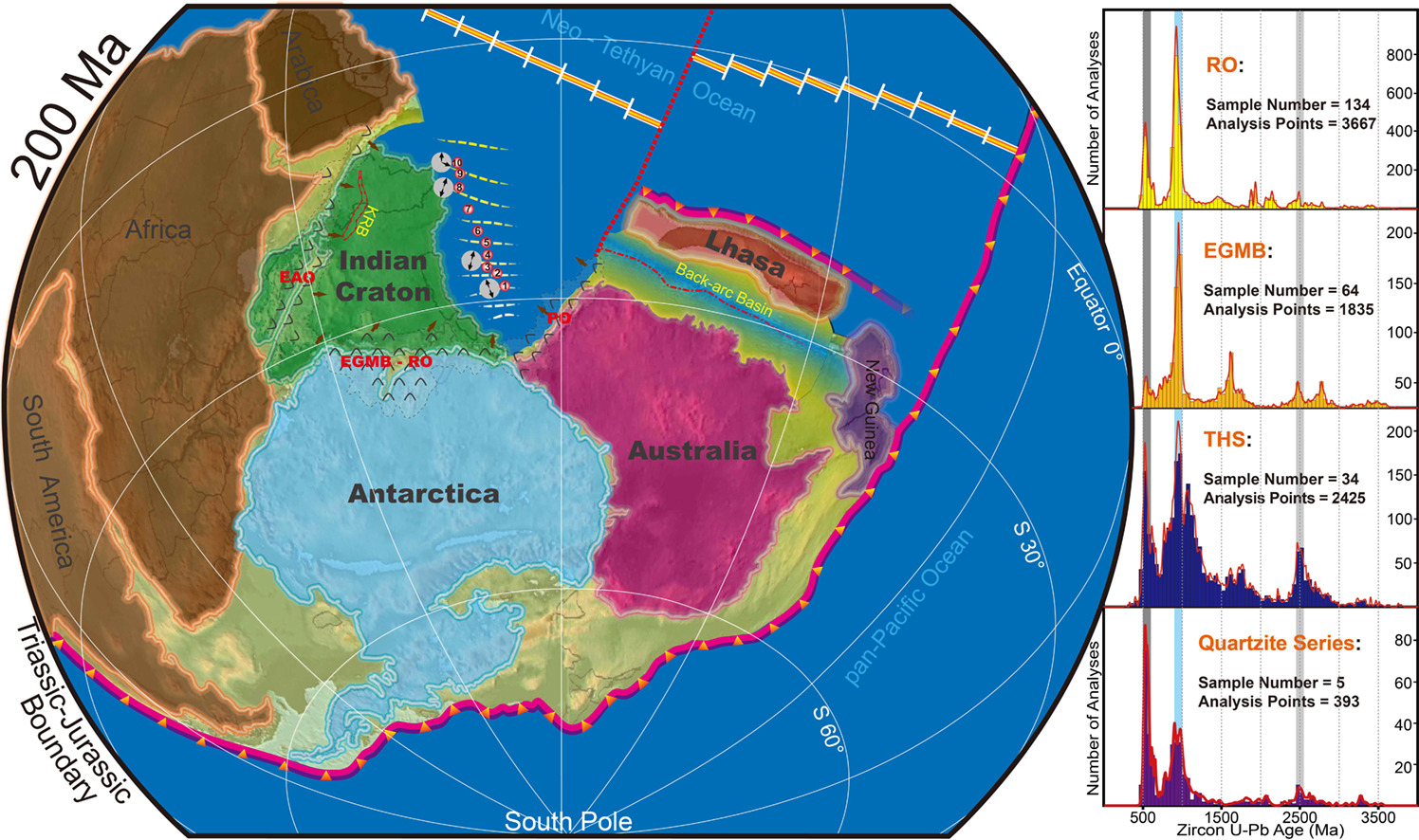Palaeo3:Sedimentologic and stratigraphic constraints on the orientation of the Late Triassic northern Indian passive continental margin
Abstract
The orientation and distribution of the northern Indian passive continental margin basin during different epochs constrained the geometric characteristics of the hyperextended northern Indian edge (“Greater India”). Traditional paleogeographic reconstructions envisage the Late Triassic northern Indian passive continental margin as E/W-trending, whereas paleomagnetic data support an ~55° counterclockwise rotation during northward drifting. This case study of Upper Triassic units from the northern Indian margin, based on facies analysis, sandstone petrography, heavy mineral assemblages, U-Pb detrital zircon geochronology, and stratigraphic correlation from the Zanskar Range to southern Tibet, provides new constraints and suggests that the northern Indian passive continental margin might have been N/S-trending in the Late Triassic. Given the dominance of quartz sandstones with zircon, tourmaline and rutile—indicating a provenance from continental blocks and the recycling of older quartz-rich sandstones—and detrital zircon age spectra characterized by a Neoproterozoic detrital zircon U-Pb age peak (921±13Ma), the Upper Triassic sandstones widespread along the Tethyan Himalayas may have been partly derived from the Eastern Ghats Mobile Belt in eastern India and the Rayner Orogen in eastern Antarctica. The Upper Triassic Quartzite Series comprises feldspatho-quartzose to pure quartzose sandstones with intercalated bioclastic oosparites deposited in backshore, foreshore and shoreface coastal environments. Without considering the subsequent counterclockwise rotation of India, the consistent pattern of the Upper Triassic bidirectional E-W paleocurrent observed throughout the Himalaya suggests that the paleoshoreline was striking near N-S, approximately perpendicular to the regional orientation of the northern Indian margin. Progressive eastward thickening of the sandstone layers and eastward younging of the Quartzite Series suggest diachronous sedimentation. Such stratal patterns and the strike of the Late Triassic paleoshoreline were attributed to the Neo-Tethys transgression from the Zanskar Range to southern Tibet.
https://doi.org/10.1016/j.palaeo.2019.109234

.png)
